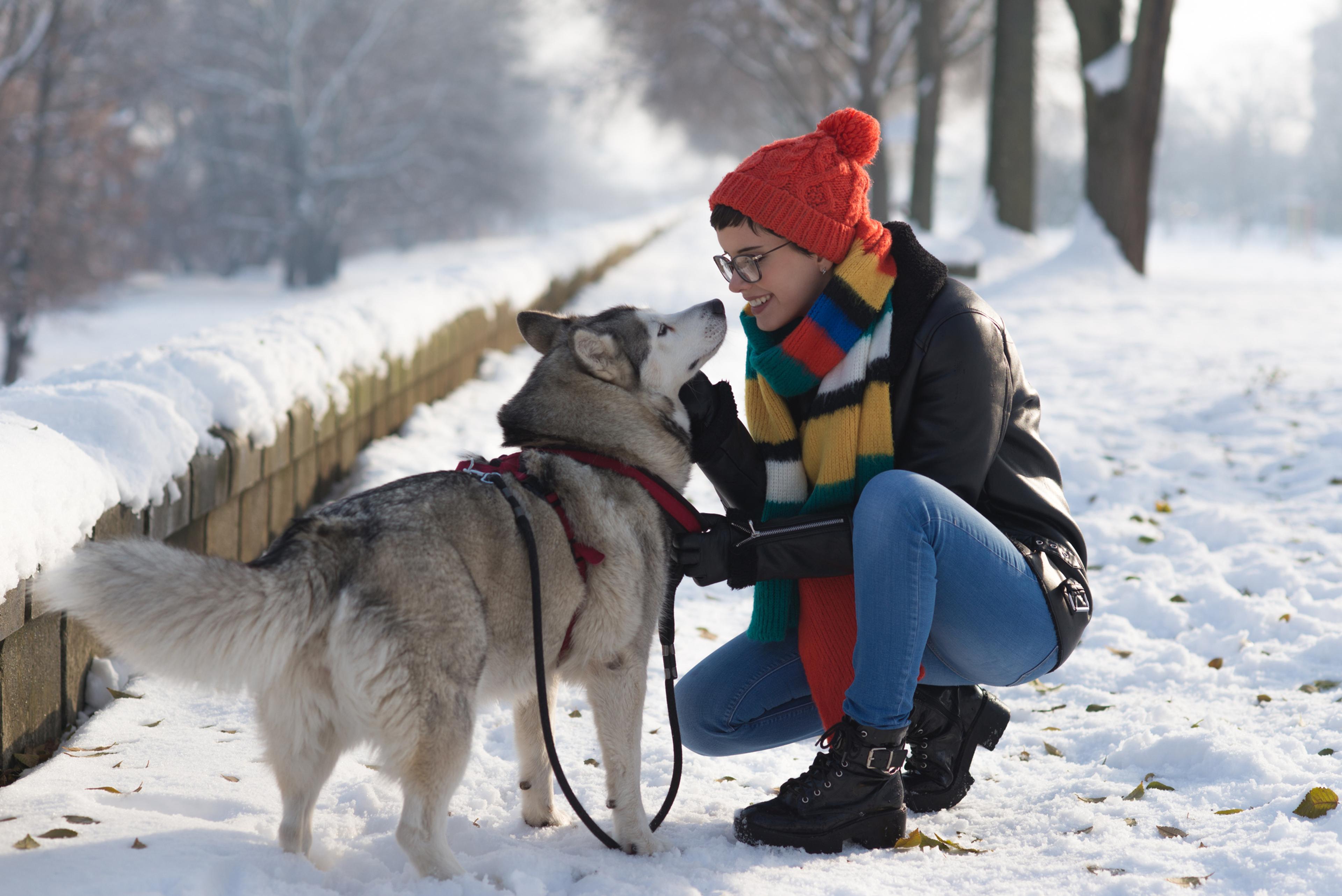Benefits of Owning a Dog

Shanthi Appelo, MS, RD
| 5 min read

Most dogs are naturally happy and even excited to see their owners. They wag their tails, lean against their owner, stick close for a head scratch or a friendly greeting. It’s a welcome-home reaction that’s pretty hard to beat. It speaks to the bond most people have with their pets, and this relationship has lots of perks for the owners, too.
Four-legged friends bring their owners both mental and physical benefits as part of their relationships. Here are some examples:
- Emotional support: With many people working from home or on hybrid schedules, having a dog at home can be a big emotional touchstone during the day. Even though most canines split their day between snoozing and running around the yard, just having a pet at home makes people feel less alone. In this way, dogs provide emotional support and give people something to talk to and take care of. A 2018 systematic review found that pets provide therapeutic benefits to those with mental health conditions, particularly in times of crisis.
- Social connection: Walking a dog, whether at a dog park or just strolling in the community, usually offers opportunities to interact with other dog owners or people in general. People might stop and have a conversation, or just say hello as they pass by. Either way, this social interaction is a mental health boost and something most people need more of.
- Exercise: People with a dog have a reason to take a walk or two every day. Whether that means hitting a local trail hoping to tire out an energetic pup, or slowly leading an older dog around the block after dinner, walking is a great exercise. Most people can go for a walk, and the intensity, duration and frequency can be adjusted to suit one’s needs and make it a cardio workout.
Michigan State University researchers determined that people who owned dogs were 34% more likely to walk at least 150 minutes every week, compared to those who did not have dogs. A daily walking average worked out to about 22 more minutes per day of exercise than non-owners.
Summer safety tips
We know not to leave your dog in the car, but there are more things to consider in the summer when it comes to caring for your pet:
- Always make sure your dog has unlimited access to water and that shade is available for moments of rest.
- External parasites like fleas and ticks are more of a concern in the warmer months. Talk with your veterinarian about the types of protection that's right for your pet.
- Some dogs may need grooming to stay cool in the hot weather. Ask your vet which type of trim is best for your dog.
- Sun protection is not just for humans. Some dogs have thin coats that put their skin at risk for burns. There are sunscreens formulated for use on dogs.
- Take walks when it’s cooler outside, such as the early morning and later evening hours during hot days.
- Stay off hot surfaces like asphalt on hot days when possible.
Remember, dogs are always wearing a fur coat -- so if you are hot when outside, they may be even hotter.
Winter safety tips
People walking their pooch in the winter will want to review these safety tips first:
- Beware of rock salt or ice melting products sprinkled on outdoor steps, walkways and sidewalks. These chemicals can make some dogs sick if they eat the product off the ground or lick the substance off their paws later, according to the ASPCA. Symptoms of ice melting product ingestion include vomiting or diarrhea. Watch dogs carefully if they are walking where this kind of product has been applied. Wipe a dog’s paws afterward with a wet cloth or a baby wipe.
- Keep an eye on the temperature. A dog’s cold tolerance depends on factors like their coat, body composition and overall health. If the temperature has dropped below 20 degrees Fahrenheit, this puts pets at risk of developing frostbite, hypothermia and other cold-related illnesses if they remain outside too long. Watch for signs that they are uncomfortable, clingy or slowing down.
- Pay attention to their feet. Cracked foot pads or bleeding paws can be signs of winter damage. Just like the skin on people’s hands and feet can be sensitive to cold, so can a dog’s paws. And if they are walking on snow, watch out for ice balls that can stick to their fur and build up on the bottoms of their paws. Typically, dogs will slow down and hold up a paw to get an owner’s attention. A pair of dog boots can add a layer of protection.
- Cut the risk of falls. Dogs who pull on their leash or run after a rabbit can spell trouble on ice. People should ensure they keep their balance by wearing winter boots with good traction, or slipping a pair of traction cleats over their boots to help keep themselves upright.
Owning a dog is a significant responsibility. Individuals should consider the demands of pet ownership seriously before making a new addition to their household, including whether they have time to walk the dog multiple times during the day, whether their home and yard can accommodate a dog and whether their lifestyle can accommodate the time and attention dogs need to be trained and loved.
Shanthi Appelö is a registered dietitian and health and wellness spokesperson for Blue Cross Blue Shield of Michigan.





